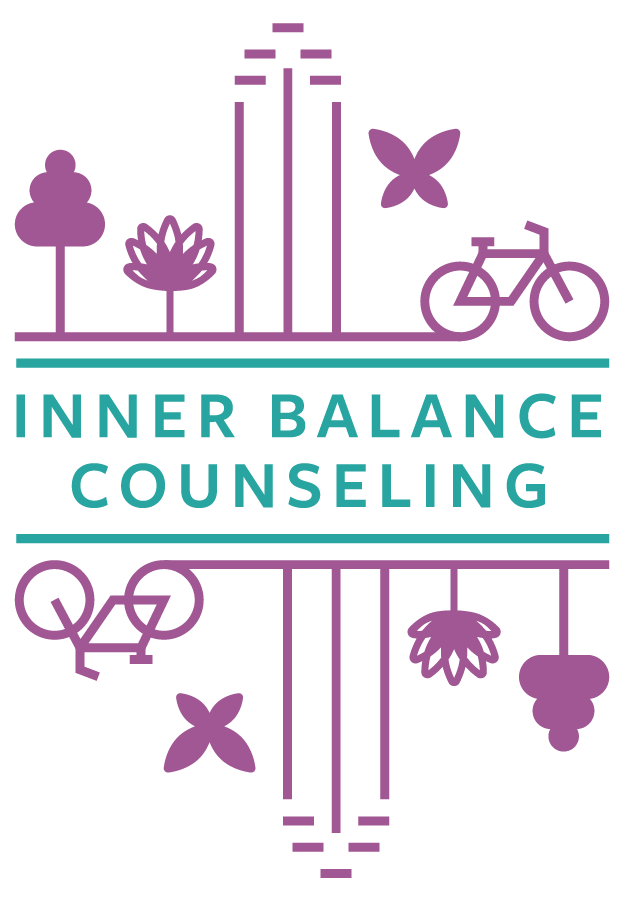Spotlight on Brainspotting: with Inner Balance therapist Jessica Taylor, LAPC
At Inner Balance Counseling, we believe that the therapy experience can be as unique as our clients are. Our therapists are trained in a wide variety of therapeutic modalities and continually seek new trainings, which allow them to best support their clients. One of the newer approaches is called Brainspotting, and it is a tool which has many in the field of psychology excited by its ability to help people access, process, and overcome negative emotions, pain and trauma. In this addition of “Spotlight On…”, Inner Balance therapist Jessica Taylor shares with us a bit more about this approach and why she loves using it with her clients.
Can you tell us a little bit about what Brainspotting is and what sets it apart from other approaches to counseling?
Brainspotting is a brain-based therapeutic approach that invites in a connection to the somatic (physical) body. It allows us to process distressing and/or traumatic experiences or beliefs in a way that traditional talk therapy often doesn't allow space for. David Grand, the developer of Brainspotting, explains it as "a powerful, focused treatment method that works by identifying, processing, and releasing core neurophysiological sources of emotional/body pain, trauma, dissociation and a variety of other challenging symptoms."
Brainspotting involves identifying an eye position that correlates to either a sense of activation or a sense of resource/support in the body and mind. There are a variety of ways to identify a "brainspot" depending on the client's needs. A pointer is then used to hold that spot in space. The client is invited to think about a specific subject they want to work on, and then stay open and curious about the process. It can be a completely internal process for clients who may not wish to verbalize what they are processing, which can be hugely helpful for clients who may feel retraumatized by sharing their stories. For this reason, it can be supportive for clients who find it harder to talk in therapy. It also allows clients to talk freely throughout, if they prefer. Bilateral sound stimulation, through the use of bone conduction headphones, can also be used, in conjunction with Brainspotting to bring in music which adds another layer to enhance the brain's processing abilities.
What led you to seek training in this approach?
I knew I wanted to support clients with therapeutic approaches that took into account both the body and mind. I believe there is a body-story and mind-story, and it is often the mind-story that gets focused on in strictly cognitive therapy. This can be great and necessary, but leaves the body-story untold (and often stuck). I have also explored approaches like EMDR (Eye Movement Desensitization and Reprocessing), but as a person with neurodivergence, I found Brainspotting to be a gentler, more flexible approach. The flexibility of the approach means that it can be tailored to each individual client. I also train in Somatic Experiencing (SE) and use that therapeutic modality in supporting clients. Since David Grand developed Brainspotting after using both EMDR and SE for decades with clients, it really spoke to me as a therapist.
What outcomes do you see with clients who you use Brainspotting with?
The outcomes with Brainspotting are as varied as the clients I see. When we are exploring memories, events or trauma, we might find we start to get activated by even thinking about or discussing it. As we start Brainspotting, we check in on that level of activation using SUD's (subjective units of distress {0-10}). It is very common that when we revisit SUD's later in session, the distress is either greatly reduced or sometimes has dropped to zero. Essentially it supports moving from feeling dysregulated to more regulated, calm and centered. Clients who have faced trauma may find that brainspotting helps to integrate those memories, so that they do not carry as heavy a charge as they once did, and this process may happen more quickly than in traditional talk therapy. Brainspotting can also help clients more generally with presentations such as anxiety, emotional dysregulation, shame, negative self-view, and even body pain and tension.
Who do you think could benefit from this approach?
I believe most everyone could benefit from Brainspotting. There are a few situations where other therapeutic approaches are more appropriate for a client, but for the vast majority of people, Brainspotting is an accessible and helpful method. It can be used with clients who have a single-event trauma, post-traumatic stress disorder, and those who have faced chronic adverse or toxic events. It can be used to support clients who have distress or dysregulation around an experience or belief. It also invites in a way to access an internal resource spot; a way of connecting with a sense of feeling more grounded, connected or neutral.
What is one piece of wisdom you have learned from your Brainspotting training that you can share with us?
I believe the W.A.I.T (why am I talking?) principle is one that I will continue to carry with me from my Brainspotting training. Our bodies naturally want to move towards balance and homeostasis, and if I can be attuned with my client, but sit back and allow them some space, often the inner wisdom of their body and mind finds its way through. My clients are the experts, and they are their healers. It is an amazing process, and I am honored when I am chosen to be a witness and a collaborator. It is a role I carry with much gratitude.
